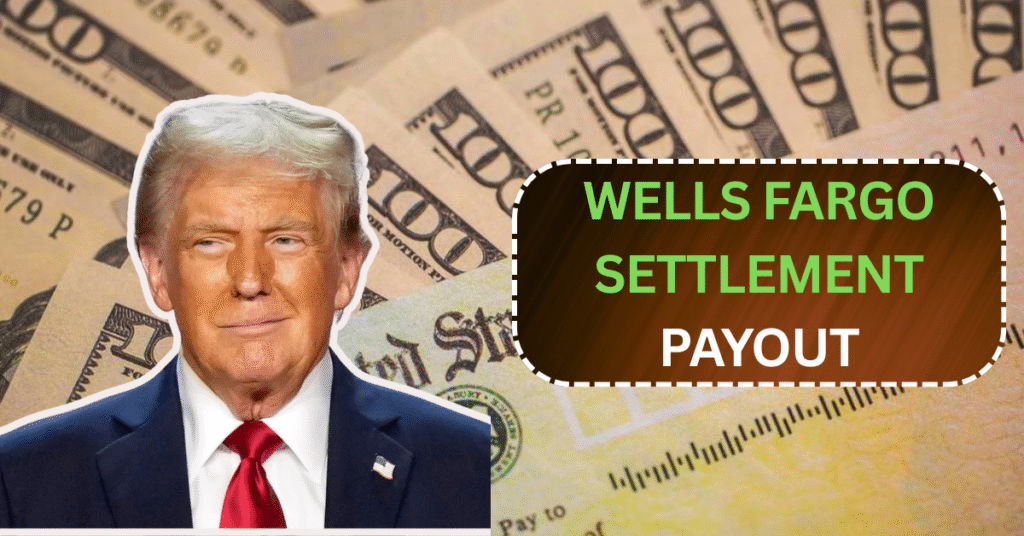In 2025, Wells Fargo will distribute compensation to millions of mortgage customers impacted by an ongoing class-action lawsuit. This major legal development arises from the handling of mortgage forbearance during the COVID-19 pandemic, when many consumers were placed on forbearance without their knowledge or consent.
The result is a $185 million settlement approved by the U.S. District Court in December 2024, aimed at compensating affected borrowers. This settlement has been a significant step in a years-long legal battle and is expected to provide much-needed financial relief to those affected.
This article explores the background of the Wells Fargo settlement, why it happened, how it affects consumers, and what has emerged from the bank’s past legal challenges.
Wells Fargo Class Action Settlement Overview
| Authority | Wells Fargo Bank |
| Name of Program | Wells Fargo Bank Settlement |
| Country | USA |
| Total Settlement Amount | $2 billion |
| Beneficiaries | Account holders during 2011–2022 period |
| Payout Date | May 2025 |
| Category | Government Aid |
| Official Website | https://wellsfargosecuritiesclassaction.com/ |
Understanding the Wells Fargo Bank Settlement: What Happened?
The Wells Fargo settlement stems from a class-action lawsuit accusing the bank of automatically enrolling mortgage borrowers into forbearance programs during the COVID-19 pandemic, without obtaining proper consent. Forbearance was a tool used to assist borrowers who were facing financial hardships due to the pandemic. However, in this case, Wells Fargo allegedly placed customers into forbearance without their explicit consent, resulting in adverse impacts on their credit scores and financial situations.
The lawsuit specifically addresses mortgages serviced by Wells Fargo that were put into forbearance between March 1, 2020, and December 31, 2021. Despite denying any wrongdoing, Wells Fargo agreed to settle the case and distribute compensation to affected consumers.
Why Did This Settlement Happen?
The core issue behind the lawsuit is that Wells Fargo allegedly enrolled borrowers in forbearance programs automatically, often with little communication or understanding of the consequences. The settlement outlines that the bank used minimal forms of communication, such as a brief phone call or a click on an informational link, to assume that borrowers consented to forbearance. In many cases, borrowers had no idea their loans were being modified.

What followed was an array of problems for borrowers. Forbearance statuses were reported to credit bureaus, which negatively impacted the credit scores of many consumers. As a result, these affected individuals found it much harder to secure new loans, refinance their existing mortgages, or obtain credit on favorable terms. Some even faced challenges with their existing loan repayment schedules, which became complicated due to extended terms and higher future payments.
Many borrowers also had to deal with higher interest rates and trouble securing new loans because their credit scores were significantly affected by the forbearance status reported to the credit bureaus. This led to serious financial difficulties, especially for individuals who were already struggling due to the pandemic.
The Impact of the Wells Fargo Settlement on Consumers
The Wells Fargo settlement has far-reaching implications for affected borrowers. Here is what eligible consumers can expect to receive in terms of compensation:
- Initial Settlement Payouts: The first portion of the settlement, totaling $69 million, will be distributed equally among eligible class members. Those who were part of the class-action lawsuit and affected by the unauthorized forbearance will receive a portion of this payout.
- Additional Compensation for Specific Damages: Consumers who faced additional harm, such as worsened credit scores, higher interest rates, difficulty refinancing, or complications with their loans due to the forbearance status, may be eligible for additional compensation. A supplemental claim form must be filed to claim this extra compensation.
- Compensation for Unpaid Loan Amounts: For borrowers whose mortgages were extended due to forbearance, which caused higher future mortgage payments, compensation is available to address these unpaid amounts. The goal is to ease the financial burden caused by unauthorised changes to loan terms.
The focus of these payments is to provide relief to borrowers who were affected by the unauthorised forbearance placements and the subsequent financial challenges they faced.
Scheduled Dates for Wells Fargo Settlement Payments
As the Wells Fargo settlement rolls out, there are key dates that consumers should be aware of:
- March 2025: Automatic settlement payments began for primary and co-borrowers who are eligible for compensation.
- January 10, 2025: This is the deadline for filing a supplemental claim for extra compensation. Consumers must submit their forms by this date if they are seeking additional payments for specific damages.
- Spring 2025: The review and processing of supplemental claims will be completed. Any additional payments for those who filed for supplemental claims will be made during this period.
These dates are critical for affected borrowers to ensure they receive the compensation they are entitled to. Those who may have missed the initial settlement payout can still file for extra compensation by the deadline.
Other Lawsuits and Legal Challenges Facing Wells Fargo
While the Wells Fargo settlement offers compensation for one aspect of the bank’s actions during the COVID-19 pandemic, it’s not the first time the bank has faced legal challenges for its practices. Wells Fargo has been involved in several other high-profile lawsuits over the years. Below are some notable instances that illustrate the ongoing legal struggles of the bank:
- 2024: Wells Fargo was accused of profiting from increasing interest rates and exploiting consumers by charging unfair rates during the rate hikes. This case drew attention to the bank’s role in benefiting from rising rates while borrowers struggled.
- 2022: The bank was found to have charged unauthorized fees, imposed surprise overdrafts, and foreclosed unfairly on some customers. As a result, Wells Fargo was ordered to pay $3.7 million in fines and restitution.
- 2020: Wells Fargo settled for $3 billion after allegations that it had pressured employees to create fake accounts in order to meet sales targets. This case is one of the most well-known legal challenges the bank has faced in recent years.
- 2018: The bank was accused of charging customers for unnecessary auto insurance and imposing excessive mortgage fees. These practices were found to have caused significant financial harm to affected consumers.
These incidents raise serious questions about Wells Fargo’s practices, particularly its approach to customer service, transparency, and consent. The company’s history of legal challenges suggests that clear communication with consumers and ethical financial practices are ongoing concerns.
What Does This Mean for Consumers?
For consumers affected by the Wells Fargo settlement, the compensation payouts are an opportunity for financial relief. However, it also highlights the need for banks and financial institutions to handle customer accounts with more care and transparency. Clear communication about changes to financial terms, such as loan forbearance, is essential to avoid further confusion and financial harm.
Consumers should take this settlement as a sign that legal action can lead to positive outcomes when financial institutions make mistakes. However, it also serves as a reminder that consumers need to stay informed about their financial status, especially during times of economic hardship like the COVID-19 pandemic.
Despite this settlement, Wells Fargo continues to face regulatory scrutiny and legal challenges. For many consumers, this case is a step toward holding the bank accountable for its actions, but it is also part of a broader conversation about the responsibilities of financial institutions to their customers.




